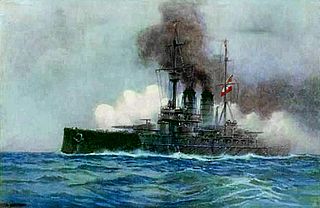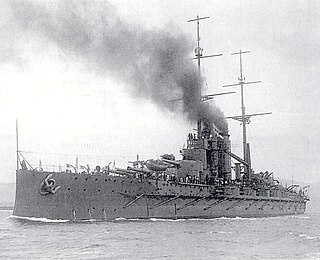 W
WSMS Árpád was a pre-dreadnought battleship built by the Austro-Hungarian Navy in the early 20th century. She was launched on 11 September 1901 as the second of three Habsburg-class battleships. Along with her sister ships, she participated at the bombardment of Ancona during World War I. Due to a shortage of coal, she was soon decommissioned after the bombardment of Ancona and used as harbor defense ship for the remainder of the war. After the war, all of the Habsburg-class battleships were ceded to Great Britain as war prizes. She was scrapped in Italy in 1921.
 W
WSMS Babenberg was a pre-dreadnought battleship built by the Austro-Hungarian Navy. She was launched on 4 October 1902 as the last of three Habsburg-class battleships. Along with her sister ships, she participated at the bombardment of Ancona during World War I. At the end of the war, she was given to Great Britain as a war prize. She was scrapped in Italy in 1921.
 W
WSMS Erzherzog Franz Ferdinand was an Austro-Hungarian Radetzky-class pre-dreadnought battleship commissioned into the Austro-Hungarian Navy on 5 June 1910. She was named after Archduke Franz Ferdinand. The first ship of her class to be built, she preceded Radetzky by more than six months. Her armament included four 30.5 cm (12 in) guns in two twin turrets, and eight 24 cm (9.4 in) guns in four twin turrets.
 W
WSMS Erzherzog Ferdinand Max was a pre-dreadnought battleship built by the Austro-Hungarian Navy in 1902. The second ship of the Erzherzog Karl class, she was launched on 21 May 1905. She was assigned to the III Battleship Division.
 W
WSMS Erzherzog Friedrich was a pre-dreadnought battleship built by the Austro-Hungarian Navy in 1902. The second ship of the Erzherzog Karl class, she was launched on 30 April 1904. She was assigned to the III Battleship Division.
 W
WSMS Erzherzog Karl was a pre-dreadnought battleship built by the Austro-Hungarian navy in 1902. The lead ship of the Erzherzog Karl class, she was launched on 3 October 1903. They were assigned to the III Battleship Division.
 W
WThe Erzherzog Karl class was a class of pre-dreadnought battleships of the Austro-Hungarian Navy built before World War I. All of the battleships of the Erzherzog Karl-class were built in the Stabilimento Tecnico Triestino shipyards in Trieste. The first battleship, Erzherzog Karl was laid down in 1902. Construction on the remaining two battleships, Erzherzog Ferdinand Max and Erzherzog Friedrich continued up to 1905. Erzherzog Karl was commissioned in 1906, while Erzherzog Ferdinand Max and Erzherzog Friedrich were commissioned in 1907. The three Erzherzog Karl-class battleships were considered relatively modern by the time they were commissioned. However, small docking space and budget restraints resulted in the class being fairly compact. Nevertheless, they were well designed and properly protected. The Erzherzog Karl class were the last and largest pre-dreadnoughts built by the Austrian Navy. They were named after members of the Austrian Royal family.
 W
WSMS Habsburg was a pre-dreadnought battleship built by the Austro-Hungarian Navy in 1899. The lead ship of the Habsburg class was launched on 9 September 1900. In 1903 and 1904, Habsburg and her sister ship Árpád conducted training exercises in the Mediterranean Sea. In 1906 and 1907, Habsburg was transferred to the III Battleship Division. One of her superstructure decks was removed to reduce weight and to modernize the vessel in 1910.
 W
WThe Habsburg class was a group of pre-dreadnought battleships built by Austria-Hungary at the turn of the 20th century. They were the first sea-going battleship built by Austria-Hungary since the central battery ship Tegetthoff in 1876. The class was composed of three ships: Habsburg, Árpád, and Babenberg. They were armed with three 24 cm (9.4 in) guns in two turrets and were capable of slightly better than 19.5 knots at full speed. Habsburg and Árpád were modernized in 1910–11.
 W
WThe Monarch class was a class of three coastal defense ships built by Austria-Hungary at the end of the 19th century. The Monarchs were the first ships of their type to utilize turrets. The class comprised three ships: SMS Monarch, SMS Wien, and SMS Budapest, each armed with four 240 mm (9 in) L/40 guns in two turrets and capable of 15.5 knots at full speed. Budapest was fitted with slightly more modern and powerful engines, giving her a top speed of 17.5 knots.
 W
WSMS Prinz Eugen was the third of four Tegetthoff-class dreadnought battleships built for the Austro-Hungarian Navy. Prinz Eugen was named for Prince Eugene of Savoy, a Habsburg general and statesman during the 17th and 18th centuries most notable for defeating the Ottoman Empire at the Battle of Zenta in 1697. The ship was armed with a main battery of twelve 30.5 cm (12.0 in) guns in four triple turrets. Constructed shortly before World War I, she was built at the Stabilimento Tecnico Triestino shipyard in Trieste, where she was laid down in January 1912 and launched in November that same year.
 W
WSMS Radetzky was the first of the three Radetzky-class pre-dreadnought battleships built for the Austro-Hungarian Navy. She was named for the 19th century Austrian Field Marshal Joseph Radetzky von Radetz. Radetzky and her sisters, Erzherzog Franz Ferdinand and Zrínyi, were the last pre-dreadnoughts built by the Austro-Hungarian Navy—they were followed by the larger and significantly more powerful Tegetthoff-class dreadnoughts.
 W
WThe Radetzky class was a group of three semi-dreadnought battleships built for the Austro-Hungarian Navy between 1907 and 1910. All ships were built by the STT shipyard in Trieste. They were the last pre-dreadnoughts built by the Austro-Hungarians, and the penultimate class of any type of Austro-Hungarian battleship completed. The class comprised three ships: Radetzky, Erzherzog Franz Ferdinand, and Zrínyi. They were armed with four 30.5-centimeter (12.0 in) guns in two twin turrets and eight 24 cm (9.4 in) guns in four twin turrets.
 W
WSMS Szent István was the last of four Tegetthoff-class dreadnought battleships built for the Austro-Hungarian Navy. Szent István was the only ship of her class to be built within the Hungarian part of the Austro-Hungarian Empire, a concession made to the Hungarian government in return for its support for the 1910 and 1911 naval budgets which funded the Tegetthoff class. She was built at the Ganz-Danubius shipyard in Fiume, where she was laid down in January 1912. She was launched two years later in 1914, but Szent István's construction was delayed due to the smaller shipyards in Fiume, and further delayed by the outbreak of World War I in July 1914. She was finally commissioned into the Austro-Hungarian Navy in December 1915.
 W
WSMS Tegetthoff was the second of four Tegetthoff-class dreadnought battleships built for the Austro-Hungarian Navy. Tegetthoff was named for the 19th-century Austrian Admiral Wilhelm von Tegetthoff, most notable for defeating the Italian Regia Marina at the Battle of Lissa in 1866. The ship was armed with a main battery of twelve 30.5 cm (12.0 in) guns in four triple turrets. Constructed shortly before World War I, she was built at the Stabilimento Tecnico Triestino shipyard in Trieste, where she was laid down in September 1910 and launched in March 1912.
 W
WThe Tegetthoff class was a class of four dreadnought battleships built for the Austro-Hungarian Navy. Named for Austrian Admiral Wilhelm von Tegetthoff, the class was composed of SMS Viribus Unitis, SMS Tegetthoff, SMS Prinz Eugen, and SMS Szent István. Construction started on the ships shortly before World War I; Viribus Unitis and Tegetthoff were both laid down in 1910, Prinz Eugen and Szent István followed in 1912. Three of the four warships were built in the Stabilimento Tecnico Triestino shipyard in Trieste; Szent István was built in the Ganz-Danubius shipyard in Fiume, so that both parts of the Dual Monarchy would participate in the construction of the ships. The Tegetthoff-class ships hold the distinction for being the first and only dreadnought battleships of the Austro-Hungarian Navy.
 W
WSMS Viribus Unitis was an Austro-Hungarian dreadnought battleship, the first of the Tegetthoff class. "Viribus Unitis", meaning "With United Forces", was the personal motto of Emperor Franz Joseph I.
 W
WSMS Zrínyi was a Radetzky-class semi-dreadnought battleship (Schlachtschiff) of the Austro-Hungarian Navy, named for the Zrinski, a noble Croatian family. Zrínyi and her sisters, Erzherzog Franz Ferdinand and Radetzky, were the last pre-dreadnoughts built for the Austro-Hungarian Navy.